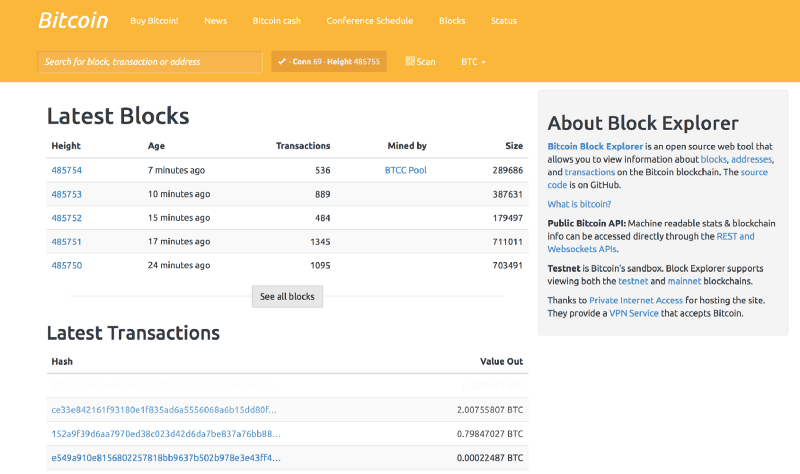Blockchain Explorer: Seeing Bitcoin in Action
To explore the web, use a web browser such as Internet Explorer or Chrome. Depending on how the blockchain works, there are also blockchain-specific online browsers such as BlockExplorer , which is a browser dedicated to viewing the Bitcoin blockchain.

Guided Tour: The Bitcoin Blockchain
A block is a place to record bitcoin transaction information, which is often referred to as a "ledger". A block is like a page on a ledger. One page of the ledger may be A4 size, and the page will be changed when it is full. The capacity of a block in Bitcoin is 1MB, and the next block is replaced in about 10 minutes. You can see that each block will never exceed 1MB in size.
The current processing speed of the Bitcoin transaction system is 7 transactions per second, so each block usually contains hundreds to thousands of transactions, and the larger the number of transactions, the larger the block. These transaction messages will be calculated by miners together with the time (timestamp), previous block hash (previous block hash) and other information (data) to a new set of random numbers and recorded on the blockchain. You can see which miner the block was generated by. Currently, the generators are almost always large mining pools .
For example, the common AntMiner is the mining pool of Bitmain, the world's largest bitcoin mining machine company. This mining pool alone accounts for about 15% of the global bitcoin computing power. Another BTCC is Bitcoin China’s mining pool, which also accounts for about 8% of the world’s computing power. Under the current operation mechanism of POW, mining pools with powerful computing power are often responsible for verifying transactions and obtaining a reward of 12.5 bitcoins per block.

Bitcoin transaction
The bitcoin transaction amount, time, and wallet addresses of both parties can be queried in the browser. And you can go back and query the bitcoin of each transaction, which source it came from before. The traceability of Bitcoin is actually higher than that of cash transactions. It's just that a person can have multiple wallets at the same time, and it is more difficult to chase people with wallets.
The FEE in the lower left corner refers to the transaction fee. Because the Bitcoin transaction system can only process less than 7 transactions per second, which is far slower than the thousand transactions per second of financial organizations such as VISA. Users can increase transaction fees to allow their transactions to be recorded on the block first. The transaction fee will be given to the miner who produced the block together with the mining reward.
Different blockchains, different browsers
Other blockchains will also have different browsers because of the different content of the block records, such as Ethereum's Etherscan . The difference is that for each block on the Ethereum blockchain, in addition to transactions with ether, the code of smart contracts will also be recorded and run by the blockchain. All content is public and can be viewed by everyone, but it is still not easy to know who the two parties are by relying on the code of the wallet on the block.
Like my work? Don't forget to support and clap, let me know that you are with me on the road of creation. Keep this enthusiasm together!


- Author
- More